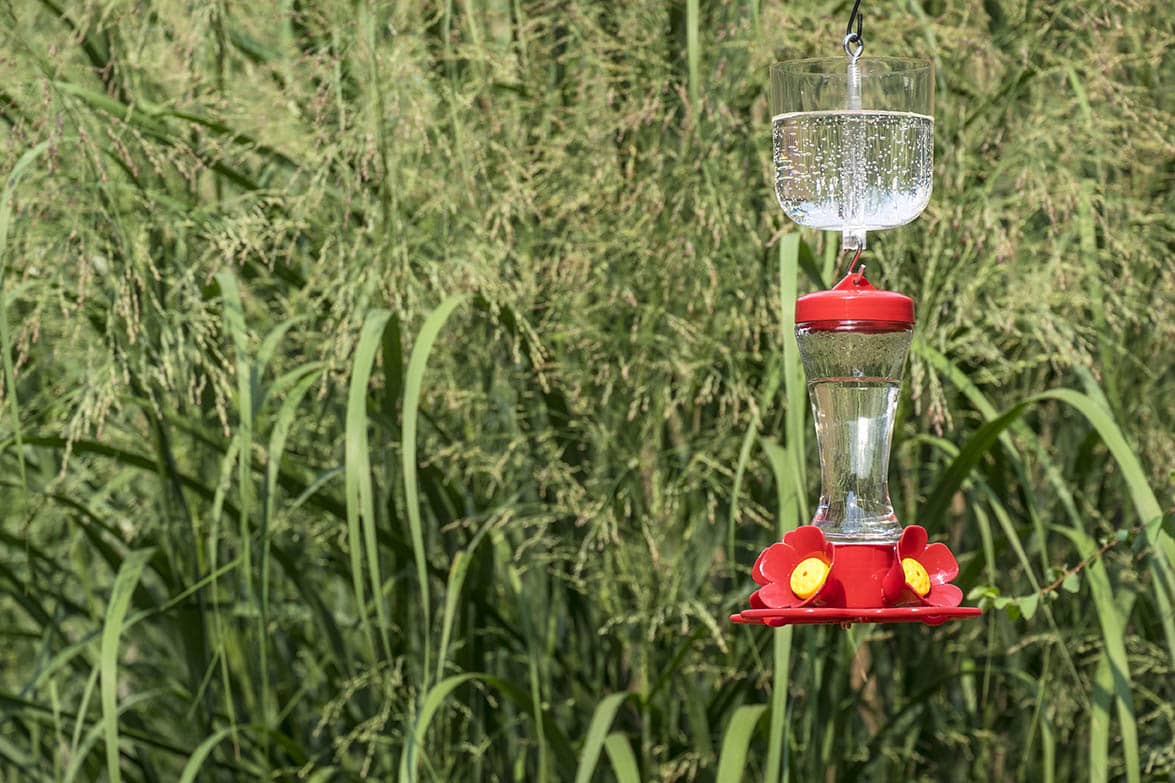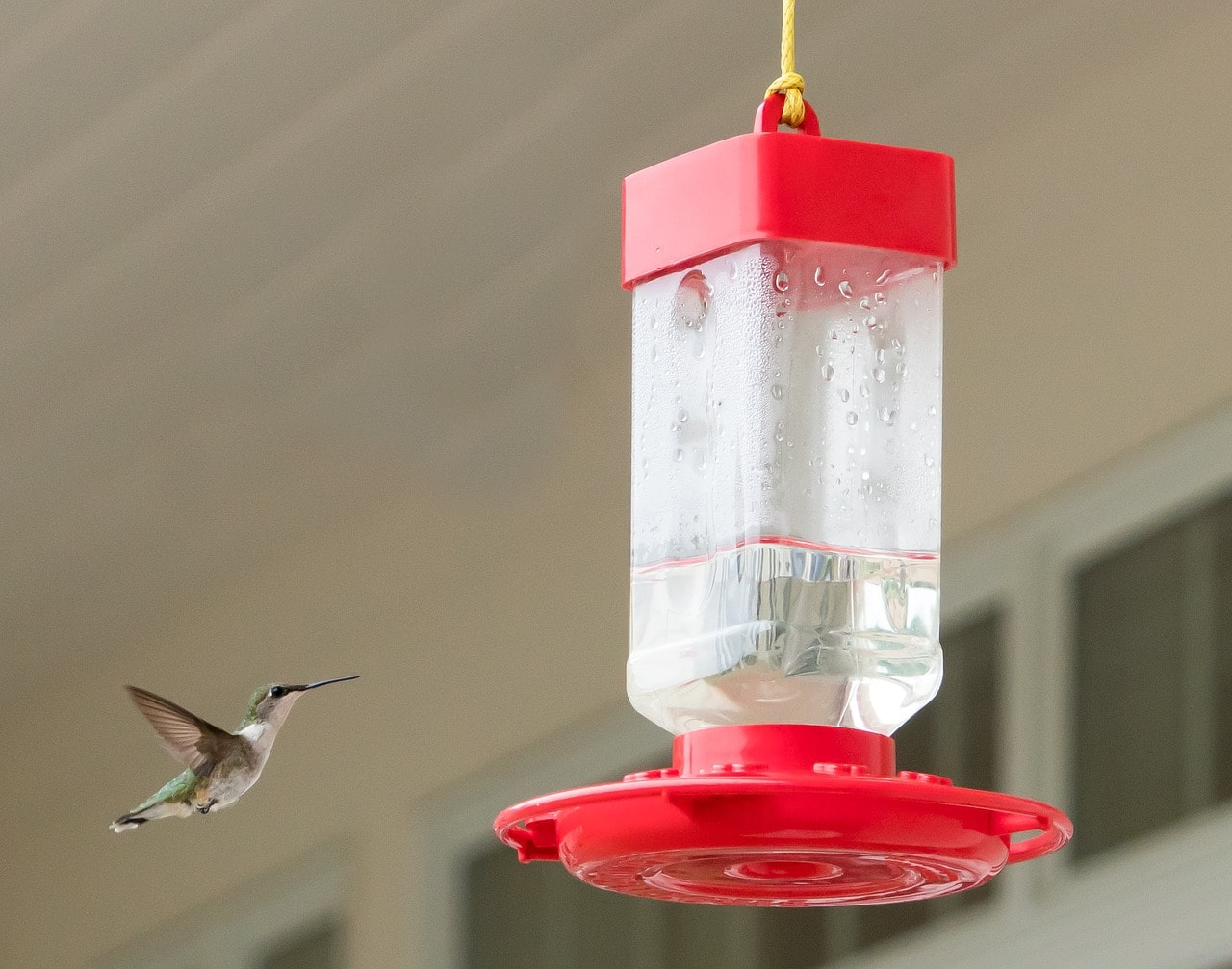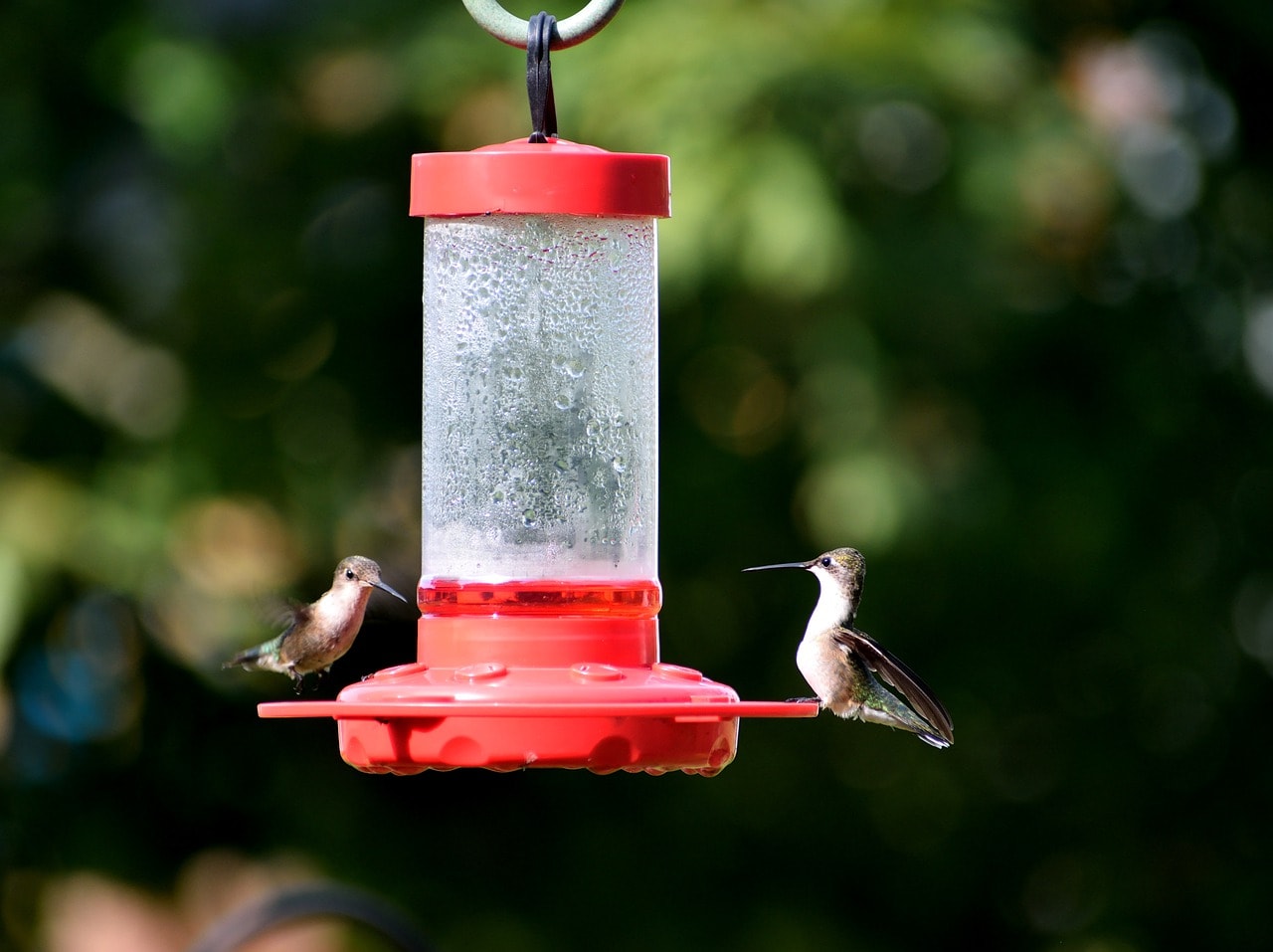9 Proven Ways to Keep Ants OUT of Hummingbird Feeders (2025)
Last Updated on

When you look outside and see hummingbirds, you know that it’s spring. But while watching these small birds flutter and suck the nectar out of a feeder can be a highlight of the entire year, ants can quickly and completely wreck the experience.
If you’re having trouble keeping those pesky insects away from your feeders, you’ve come to the right place. We’ve highlighted nine effective ways that you can keep ants out of your hummingbird feeders.
For best results, utilize multiple methods at the same time to keep ants away. The more difficult it is for the ants to get to the feeder, the less likely they’ll keep coming back.

Proven Ways to Keep Ants Out of Your Hummingbird Feeders:
1. Invest in an Ant Moat and Ant Guard
Ant moats and ant guards are two different methods for keeping ants away from your feeders. Ant moats consist of rings of water that ants need to cross to reach your feeder. Since ants can’t swim, it’s an effective way to keep them away.
Ant moats are great, but if the ants are determined enough, they can form bridges with their bodies and climb over them. That’s why it’s best to use ant moats in tandem with ant guards. You mount ant guards over a hummingbird feeder, and inside the ant guard, there is a light insecticide.

While you might worry about the insecticide hurting the hummingbirds or other beneficial bugs, it only gets the ants trying to get to the hummingbird feeder. The hummingbirds themselves can’t reach it.
When you use an ant moat and ant guard in tandem, you’re unlikely to have any more ant problems around your hummingbird feeders.
2. Hang Feeders on Fishing Lines
If you’re hanging your hummingbird feeder from a tree or another object where it’s hanging, try using a small fishing line to hang it.
Not only is the fishing line hard to see, which can add to the feeder’s aesthetic appeal, but it’s incredibly narrow, so it’s difficult for ants to climb up and down it. It’s not a foolproof method, but it can be enough to deter ants from hitting your feeders.

3. Use Something Slippery on the Pole
Another great way to keep ants away from your hummingbird feeder is to apply a slippery substance on the pole. While this isn’t a foolproof method either, it works surprisingly well. If it becomes too much work for the ants to reach the feeder, then they might just seek another meal.
While this is an incredibly easy method to use, you’ll have to reapply whatever substance you use, especially after it rains or storms. For slippery substance suggestions, we recommend a thin layer of Vaseline to keep ants away. Do know that if the ants are determined enough, they’ll climb over it.
4. Use Adhesives on the Pole
If you find that slippery substances aren’t working, you can always flip the script. Instead of using slippery substances, try using something that will keep them stuck to the pole.
However, while adhesives are incredibly effective, chances are that you’re not just going to catch ants. Anything that hits the adhesive will get stuck, so helpful bugs and even birds can get stuck too.

5. Move the Feeder
You might find that moving your hummingbird feeder to another spot in the yard might be all that it takes to keep the ants away, especially if you’re adding measures to keep them from getting to the feeder after you move it.
Ants leave scent trails for the rest of the colony to get back to the food. So, if you don’t move your feeder, you’re inviting a test as all the ants try to follow the trail.
However, if you implement new measures to keep the ants from reaching the feeder and move it to a new spot, you’ll have a much higher chance of success because the ants won’t be trying as hard to reach the feeder.
6. Keep the Feeder Clean
The longer you leave your feeder out, the messier it’s going to be. When you’re dealing with ants, having a mess of potential food is adding fuel to the fire. If you take the time to clean your feeders every couple of days, you’ll significantly reduce the chances of ants hanging around.

7. Make Sure Your Feeders Don’t Leak
This is in the same vein as keeping the feeders clean but more important. If your feeder is leaking, there might be nothing that you can do to keep the ants away. Once they see food, they’ll go to incredible lengths to get it.
Do your best to fix any leaks, but if you can’t, you might need to replace your hummingbird feeder.
8. Use Bay or Mint Leaves
A little-known natural insect repellant is bay and mint. Both are natural remedies for insect problems, and the best part is they won’t have any harmful effects on the ecosystem! Simply rub bay or mint leaves over areas that the ants would need to cross, and this acts as a deterrent.
Keep in mind that you’ll need to reapply either substance any time the area gets wet, as it will wash away. If you’re finding that simply rubbing the leaves on the area isn’t enough, you can always leave crushed leaves around the pole, and this should act as a stronger deterrent. You’ll need to occasionally reapply to keep the strongest effects working.

9. Hang the Feeder Over Water
This might not be an option for you, but if it is, then it’s a great way to keep ants away. Ants don’t like water, so if you can keep your feeder over a pond or even a fountain, it can be a great way to keep ants away.

Final Thoughts
There are few things more enjoyable than sitting back and watching a hummingbird collect nectar from a feeder. But ants can ruin the fun, which is why it’s essential to get ahead of the problem.
Hopefully, this guide gave you everything that you needed to keep those pesky insects away from your feeders so you can enjoy the warming weather and the beautiful birds visiting your yard.
Check out some of our top trending posts:
- 10 Proven Ways to Keep Bees OUT of Hummingbird Feeders
- 3 Proven Steps to Get a Bird Out of Your House
- 9 Proven Ways to Attract Orioles to Your Yard & Feeders
Featured Image Credit: Chiyacat, Shutterstock
Table of Contents
About the Author Robert Sparks
Robert’s obsession with all things optical started early in life, when his optician father would bring home prototypes for Robert to play with. Nowadays, Robert is dedicated to helping others find the right optics for their needs. His hobbies include astronomy, astrophysics, and model building. Originally from Newark, NJ, he resides in Santa Fe, New Mexico, where the nighttime skies are filled with glittering stars.
Related Articles:
How to Clean a Refractor Telescope: Step-by-Step Guide
How to Clean a Telescope Eyepiece: Step-by-Step Guide
How to Clean a Rifle Scope: 8 Expert Tips
Monocular vs Telescope: Differences Explained (With Pictures)
What Is a Monocular Used For? 8 Common Functions
How to Clean a Telescope Mirror: 8 Expert Tips
Brightfield vs Phase Contrast Microscopy: The Differences Explained
SkyCamHD Drone Review: Pros, Cons, FAQ, & Verdict
